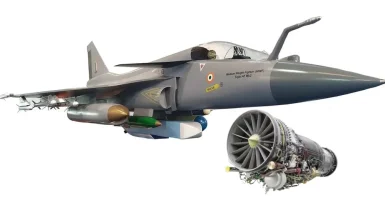- Views: 2K
- Replies: 13

In an era where warfare is becoming increasingly digital, the Indian Air Force's Tejas MkII program is placing a high priority on adaptable software, recognizing it as a key factor in maintaining the fighter jet's combat effectiveness and longevity.
Unlike traditional software development for military aircraft, which often involves lengthy development and testing cycles, the Tejas MkII's software is designed for rapid adaptability. This allows the IAF to update and iterate functionalities within weeks, enabling the jet to remain at the cutting edge in an ever-evolving technological landscape.
The Tejas MkII features a significant upgrade in sensors and avionics, including a Wide Area Display (WAD), creating a complex information environment for the pilot. Advanced software will play a critical role in seamlessly integrating and presenting this data to the pilot in a clear and actionable format, fostering quicker decision-making and enhanced situational awareness.
The software architecture itself is being designed with openness in mind. While core functionalities remain intact, the tactical management portion can be readily upgraded, ensuring the aircraft can seamlessly integrate new weapons and technologies as they become available, thus significantly extending its operational life.
The Bangalore-based Software Development Institute (SDI), in collaboration with the Aeronautical Development Agency (ADA), has been entrusted with the responsibility of developing this critical software. Their expertise will span not only combat-oriented software but also software for maintenance and periodic checks, streamlining the entire lifecycle of the Tejas MkII.
Developing software for a fighter jet is a massive undertaking involving thousands of lines of code, each playing a vital role in the aircraft's performance, weapon systems integration, and pilot safety. With the Tejas MkII's expanded weapon arsenal, the software's complexity will inevitably increase, demanding even more robust and efficient coding practices.
By prioritizing adaptable software, the Tejas MkII program is not only ensuring that the aircraft remains combat-ready for years to come but also showcasing India's growing prowess in the field of aerospace software development.

